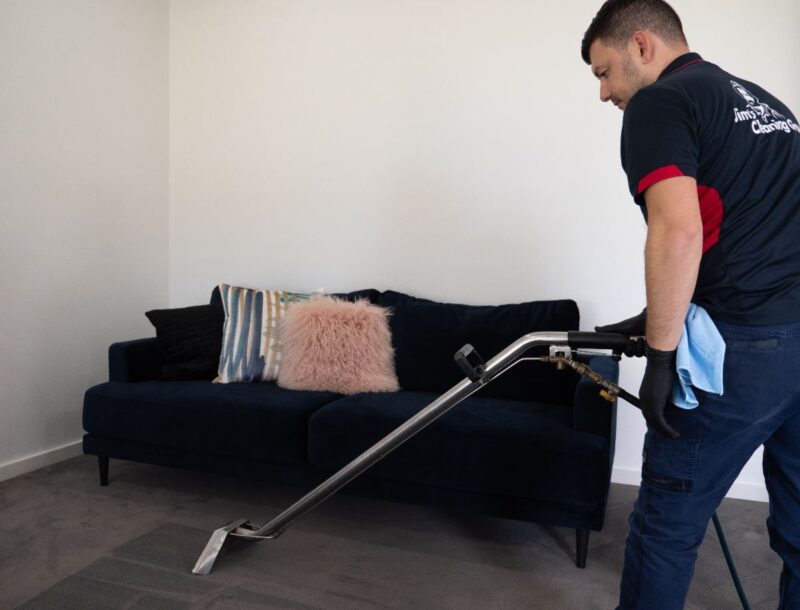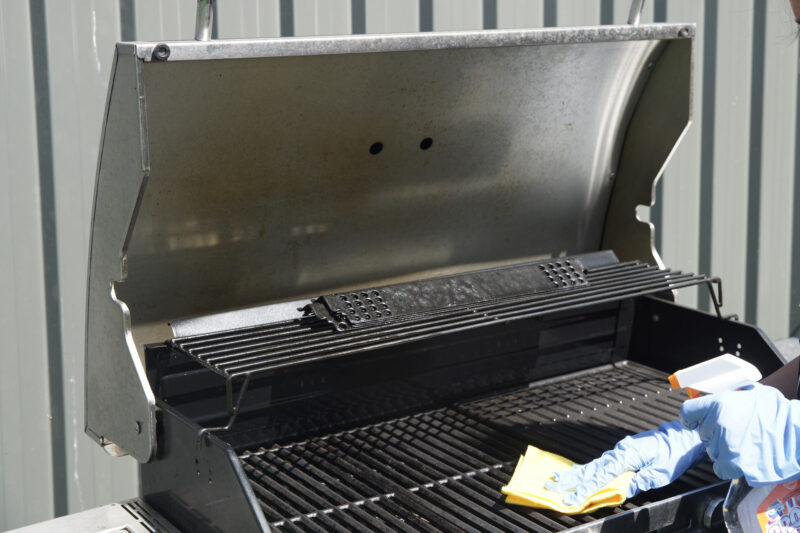A clean mattress is essential for a good night’s sleep and a hygienic bedroom environment. However, mattresses often accumulate stains from spills, sweat and other bodily fluids, which can be challenging to remove.
In this guide, we’ll discuss how to remove mattress stains, the tools and materials you need as well as how to perform general mattress cleaning and how often you should do so.
The basics: how to clean your mattress
Keeping your mattress clean is crucial for a healthy sleeping environment and extending its lifespan.
- Vacuuming — Use the upholstery attachment to thoroughly vacuum the top and sides of the mattress. This removes dust, dead skin cells and other debris that can accumulate over time.
- Spot cleaning stains — Clean up a spill or stain as soon as possible to prevent it from setting. Apply a small amount of mattress stain remover or a mild detergent solution and water directly to the stain. Gently blot the area with a clean, damp cloth. Avoid scrubbing to prevent the stain from spreading deeper into the fabric.
- Deodorising — Mattresses can start to smell over time due to a buildup of moisture and body sweat. Sprinkle a generous layer of baking soda over the entire surface of the mattress. Let it sit for several hours or, ideally, overnight, to absorb odours. Vacuum up the baking soda thoroughly.
- Airing out the mattress — Whenever you change your bedding, air the mattress for a few hours before putting on new sheets. This helps allow any moisture trapped in the mattress to evaporate and refreshes the fabric. If possible, expose the mattress to sunlight for a few hours twice a year. Sunlight is a natural disinfectant and can help eliminate bacteria and odours.
How often you should clean your mattress
Regular cleaning can help remove dust and potential irritants that accumulate over time. Here’s a simple guide on how often you should clean your mattress:
- Vacuuming — Every two months or more often if needed.
- Deodorising — Every six months or whenever odours are noticeable.
- Deep Cleaning — Conduct a thorough cleaning once a year or more frequently if you have pets or allergies. This includes vacuuming, stain removal and deodorising.
How to remove stains from mattresses
Before you begin the stain removal process, ensure you have the following items on hand:
- Vacuum cleaner with an upholstery attachment
- Baking soda
- Mild detergent or a specialised mattress stain remover
- Clean cloths or sponges
- Cold water
- White vinegar (optional for tougher stains)
1. Vacuum the mattress
Start by vacuuming the entire surface of your mattress using the upholstery attachment. This will help remove any loose dirt, dust and debris, making it easier to focus on the stains.
2. Identify the type of stain
Different types of stains require different cleaning approaches. Enzymes in laundry detergents can be effective for organic stains like blood or urine. For food or drink stains, a mild detergent usually does the trick.
Each type of stain requires specific treatment to ensure it is effectively removed without damaging the mattress. Always use a mattress stain remover suitable for the type of fabric of your mattress, and test any cleaning solution on a small, inconspicuous area first to prevent unwanted damage.
Check our step-by-step guide below for tackling specific stains.
- Blot the stain with a clean, dry cloth to absorb as much blood as possible.
- Mix a solution of 1/2 cup cold water and 1 tbsp salt. Apply it directly to the stain and let it sit for a few minutes.
- Rinse with a cloth dipped in cold water, then apply a small amount of hydrogen peroxide directly if the stain persists.
- Blot dry with a clean cloth.
- Absorb fresh stains by blotting with paper towels or a dry cloth.
- Spray a mixture of 50% white vinegar and 50% water onto the stain. Allow it to soak for 10-15 minutes.
- Blot the area again to remove the mixture.
- Sprinkle baking soda over the affected area to deodorise it and let it sit overnight. Vacuum it up the next day.
- Mix a solution of equal parts cold water and distilled white vinegar.
- Lightly spray the solution onto the stain, ensuring the area is damp but not soaked.
- Allow the solution to sit for 30 minutes.
- Rinse the area with a cloth dipped in cold water and blot dry.
- Remove any solid residue with a spoon or blunt knife.
- Mix a solution of liquid dish soap in water. Use a sponge to apply the solution, dabbing it gently onto the stain.
- Rinse by blotting with a damp cloth dipped in clean water.
- Apply a layer of baking soda to absorb any lingering moisture or odour and vacuum it off after a few hours.
3. Spot cleaning
Apply a small amount of mattress stain remover or a mixture of water and mild detergent to the stained area. Gently blot the stain with a clean cloth or sponge. For tougher stains, you can use a solution of one part white vinegar to two parts cold water. Apply the solution to the stain and let it sit for 10-15 minutes before blotting.
4. Rinse with cold water
After the stain has been lifted, rinse the area by dabbing it with a cloth dampened with cold water. Make sure to remove any cleaning solution residue, as this can attract more dirt over time.
5. Apply baking soda
Sprinkle a generous amount of baking soda over the cleaned area. Baking soda is excellent for absorbing any moisture and neutralising odours. Allow the baking soda to sit on the stain for several hours or overnight if possible.
6. Vacuum again
Once the baking soda has done its job, vacuum it up using the upholstery attachment. This will remove the baking soda along with any lingering odours and residue.
Preventing future mattress stains
Preventing stains in the first place is key to maintaining your mattress’ cleanliness and extending its lifespan. Here are some proactive steps to help keep your mattress spotless:
- Use a mattress protector — A high-quality waterproof mattress protector is the best defence against stains. It not only prevents liquids from reaching the mattress but can also be easily washed in case of spills.
- Rotate the mattress — Rotating your mattress every few months helps prevent the accumulation of body oils and sweat in specific areas, which can lead to staining.
- Make regular cleaning a habit — Even if no spills occur, regular vacuuming of your mattress helps prevent the buildup of dust and allergens, which can contribute to staining and odours. Also, handle spills immediately.
Trust Jim’s Cleaning for professional mattress stain removal
Cleaning stains from your mattress can rejuvenate your sleeping space and extend the life of your mattress. By following the steps outlined above, you can effectively remove the most common stains and maintain a clean, hygienic sleeping environment.
For persistent or very tough stains, consider consulting a professional cleaning service such as Jim’s Cleaning to ensure your mattress is treated correctly without causing any damage.
If you’re struggling with how to get stains out of a mattress, we can help! Our mattress cleaning experts specialise in removing mattress stains efficiently, using specialised products and techniques designed to tackle even the most stubborn stains. Contact Jim’s Cleaning to request a free quote or to learn more about our services.



